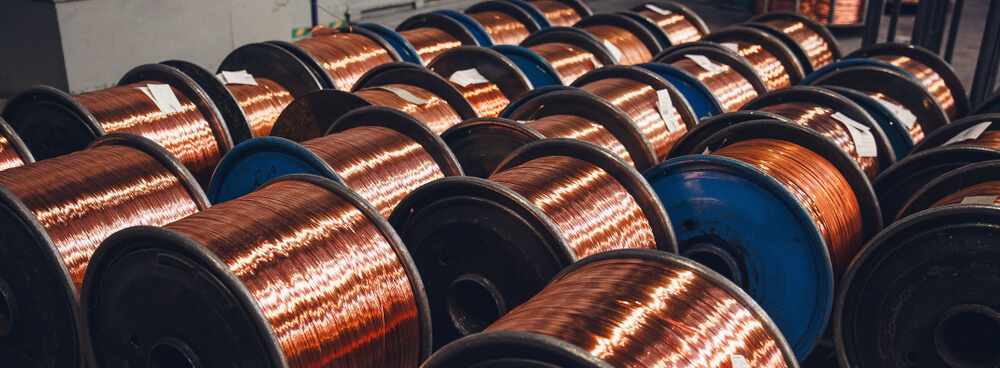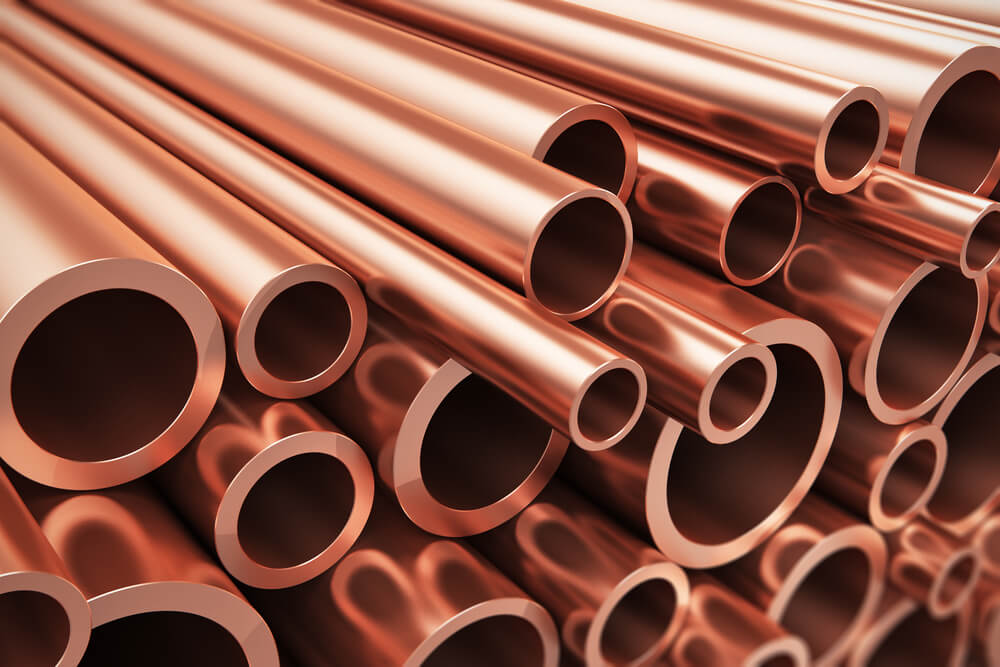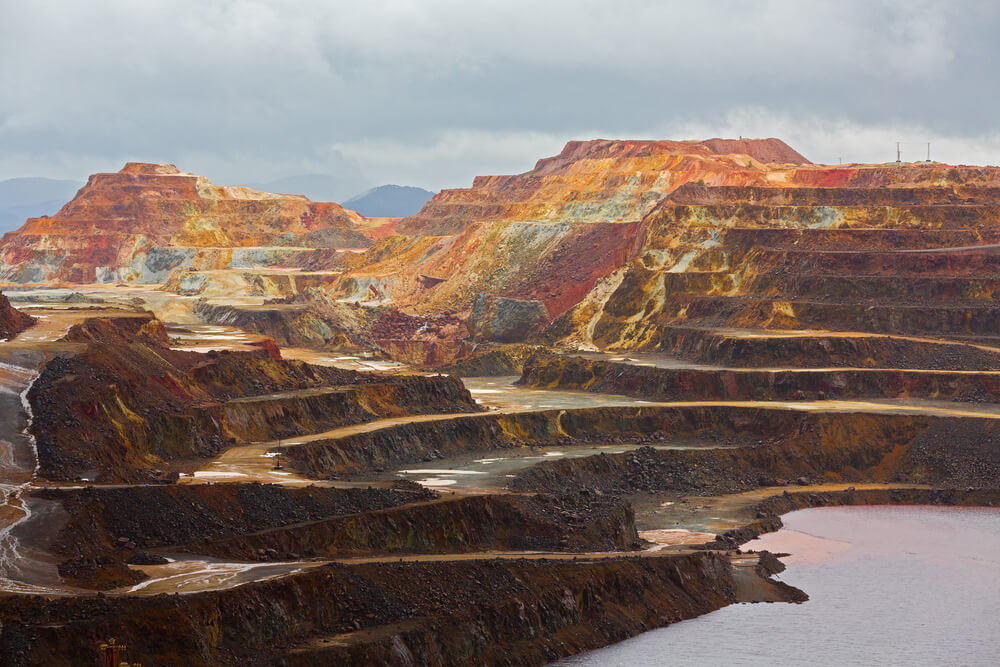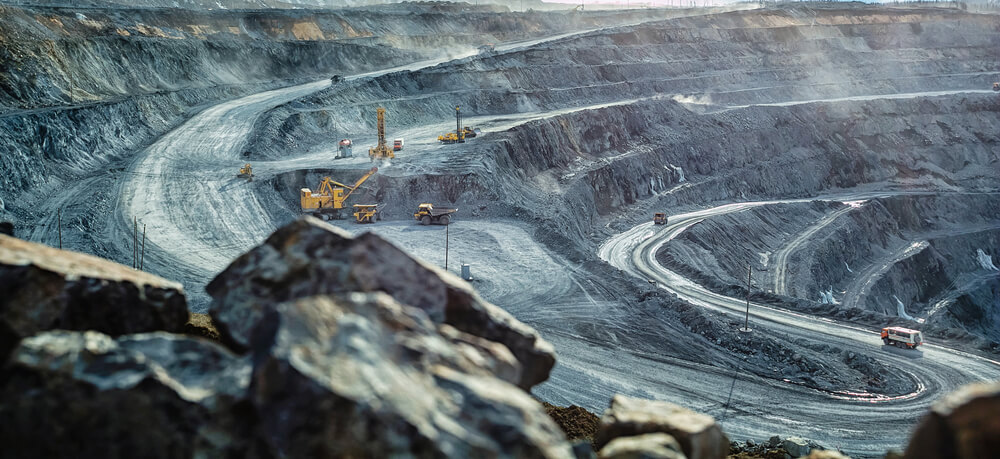Copper in Pakistan – Resources And Uses
One of the fundamental carbon molecules is Copper. Copper is a dark red metal with a significant electronic and thermal permeability almost entirely pure. Electric cable, frying saucepans, pipes and tubes, vehicle engines, and a host of other things are frequently made using it. Additionally, Copper is utilized in linen, paint, fabrics, and wood as a conservator and dye. Both bronze and brass are made by combining tin and zinc. It is one of the most profitable natural resources in Pakistan.
What is Refined Copper?
Refined Copper satisfies the necessary physical standards for a strong shot and the basic purity standards for the relevant Market.
Copper is often present in less than 1% of mined rock. This means that Copper must undergo several mechanical and chemical processing stages to be available on the Market.

Concentration is the first significant step in refining once a firm extracts the copper metal. This critical procedure grinds obtained ore to remove Copper from mining waste approximately and is typically carried out at or near mining locations to reduce transportation expenses.
How is Copper Made?
The producer transforms the mineral from its unprocessed, extracted condition into a refined version for usage in numerous industries. Copper refining is a complicated process that necessitates innumerable steps. Oxide and sulfide ores comprising 0.5% and 2.0% copper are commonly used to recover Copper.
Copper miners use different refinement methods depending on the type of ore and other ecological and economic concerns. Over 80% of the Copper produced worldwide comes from sulfide origins.
To eliminate sludge or undesirable elements embedded in the ore, extracted copper ore must be first focused, irrespective of the type of ore. In a sphere or rod crusher, the ore is crushed and ground into powder as the initial step in this procedure.
Copper Production in Pakistan
Pakistan has the fifth-largest copper deposit in the globe. As authorities ramp up the manufacturing of wind and solar power tech in addition to e – mobility to meet climate change goals, copper manufacturing will play a crucial role in the worldwide move to sustainable power in the coming ten years. Pakistan generated about 13,000 tonnes of copper ores in 2020.

Is Pakistan Rich in Copper?
Copper is a treasure for Pakistan, and the country also has enormous copper reserves, primarily centered in Baluchistan. There are reportedly more than 1600 million tonnes of copper deposits in Pakistan. Copper and significant gold resources may be found at Reko Diq, Baluchistan.
Mine in Balochistan
Pakistan, particularly Baluchistan, has been lavishly blessed by nature with the mineral wealth of metals like gold, Copper, mercury, antimony, and silver. In the Baluchistan province, numerous efforts are being undertaken to conduct scientific research and exploit the region’s mineral resources. Famous for its copper-gold mines is Saindak town in Pakistan’s Baluchistan’s Chagai District.
The Pakistani Geological Survey and international buyers have revealed large-scale copper deposits in numerous locations. Copper resources in the Saindak and Rekodiq deposits are roughly 4.5 billion tonnes. From the Saindak deposits, the total amount of Copper, gold, and silver that can be recovered is approximately 1.69 million tonnes, 2.24 million ounces, and 2.49 million ounces, respectively.
Which Area has the Most Extensive Deposits of Copper in Pakistan?
Reko Diq is a significant copper-gold mine with 12.3 million tonnes of Copper and 20.9 million tonnes of gold in estimated and suggested deposits in the Chaghi District of Balochistan in Pakistan.
Uses of Copper in Pakistan
As governments ramp up the manufacturing of solar and wind turbine power and alternative fuels to meet climate targets, copper manufacturing will play a significant role in the global move to sustainable power over the next ten years. As the world’s energy demand is predicted to rise in the following years, companies and legislators, especially in the US, Europe, and China, have made large expenditures on renewable sources of electricity and technology.
Copper is required for these renewable energy sources to be transformed and transmitted to a usable end state. Copper is the most economical material for several sustainable power systems, including wires, cells, semiconductors, and converters. The majority of Copper is utilized in motors and other electrical devices.

This is so that it may be pulled into wires and because it conducts electricity and heat very well. Additionally, it is utilized in industrial machines, flooring, and plumbing. Copper sulfate is a traditional agricultural pesticide and filtration algicide. Chemical assays for sugar detection involve copper complexes, such as Fehling’s solution.
Copper Ore Exports
Today, Pakistan’s export price per unit cannot be compared to the median price worldwide. Pakistan pays extremely little for the export of its goods. Pakistan’s poor management of its copper industry is cause for concern. If we control product costs and look into other markets like Japan, Korea, Germany, Canada, Spain, USA, India, etc., it might be a source of increased world exports.
The mining industry also identified incorrect billing as a significant problem. The bulk of mineral ores, trash and scrapes, copper rod and strips, electrical cables, copper sheets, copper cylinders, and pipes are currently exported by Pakistan.

Instead of relying primarily on China for exports, Pakistan must broaden its export markets. Pakistan should look at the Middle East, Europe, and the CARs. Suppose Pakistan works on manufacturing other value-added goods like raw and polished Copper, master combinations, copper ingots, and rods. In that case, improvement can significantly expand world exports instead of shipping copper ore and extracts. Pakistan’s copper output and exports are anticipated to grow by ten times shortly.
Imports
China’s sole copper ore supplier in Pakistan. Only China is receiving the cheap copper oxides and bauxite that Pakistan exports. The mines, processing, and buying and selling subareas offer additional potential for the private Market and direct foreign investments. One of the world’s most extraordinary untapped Copper and gold resources, Reko Diq, has the potential to produce 200,000 tonnes of Copper and 250,000 ounces of precious metals annually for more than 50 years. One of the planet’s giant copper and gold processing projects will be the Reko Diq project. Due to the development of EVs and sustainable energy sources like solar and wind, Reko Diq likely arrived at the proper time and is currently in the appropriate time frame.
Where is the Largest Copper Mine in the World?
Six of the ten biggest copper mines on the planet are found in Chile, the nation with the highest global copper production; the other four are spread among Peru, Mexico, and Indonesia.
Escondido is also the biggest copper-producing mine on the planet. In the fiscal year that ended in June 2013, output was 1.1 Mt or nearly 5% of the world’s copper production.
Rate in Pakistan
The rate of Copper per KG, depending on grade and quality, is Rs 2300 to Rs 2500.
Reko Diq
With 12.3 million tons of Copper and 20.9 million ounces of gold in estimated and indicated reserves, Reko Diq is a substantial copper and gold deposit. One of the world’s most fantastic untapped Copper and gold resources, Reko Diq, has the potential to produce 200,000 tons of Copper and 250,000 ounces of gold annually for more than 50 years.
In a momentous event, the Pakistani government canceled the $11 billion penalty that the World Bank arbitration had imposed on Pakistan and granted the development contract for the Reko Diq project to the Canadian firm “Barrick Gold.” One of the most incredible gold and copper deposit-holding sites in the world is located in the province of Baluchistan, and the corporation is anticipated to invest several billion dollars there
Interesting Facts about Copper
Copper is a common mineral used in several industries. It is an essential element of things we use in our daily life. Here are a few quick facts about the standard yet intriguing mineral.
Four thousand four hundred pounds of Copper are used in a typical home’s electrical wiring, plumbing, and equipment. A typical automobile contains 50 pounds of Copper.
Professional chefs prefer copper pots and pans because they produce homogeneous cooking and have no hot spots.
· Copper has a built-in antifungal activity. Brass handrails, fingerplates, and door handles are great options for public buildings since they will stop the spread of disease.
· When working near explosives, copper tools are the best option because they won’t produce sparks.
· Since we can recall, Copper has been utilized. The evil eye symbolized Copper in Egyptian culture, and copper piping was used in Egyptian tombs.
· Brass may be made by alloying Copper with zinc, and alloying Copper can make bronze with tin.
FAQ
How is Copper transported from the mines?
The excavated boulders are subsequently prepared for transportation; the ore can be transported from the explosion site to the production site using shuttle cars, conveyors, railways, and specialized haul trucks. Massive machinery is required to move the countless tonnes of ore.
What is the best way to clean the Copper?
A chemical reaction between salt, vinegar, and wheat polishes Copper. 1/4 cup salt, 1/4 cup flour, and 1/4 cup vinegar should be combined to form a thick paste. After applying the paste and using a cotton towel to softly polish the copper area until it sparkles, properly rinse and dry it.
Where does Pakistan import copper from?
Leading trading partnerships for Pakistan in 2020:
· United Arab Emirates has a 57% share (6.37 million US dollars).
· China holds a 19% stake (2.12 million US dollars)
· Sri Lanka holds 15.5% of the equity (1.72 million US dollars).
· Malaysia holds a stake worth $299k (2.69%)
· NES, with a stake of 1.77% (197k US do another, is another Europe.
· Germany had a stake of 1.64% ($183,000)
· Indonesia contributed 1.09% of the total (122k US dollars).
· United Kingdom: 43,000 USD
· Japan – 34,000 US dollars
· Other Asia, NES – USD 11,000
